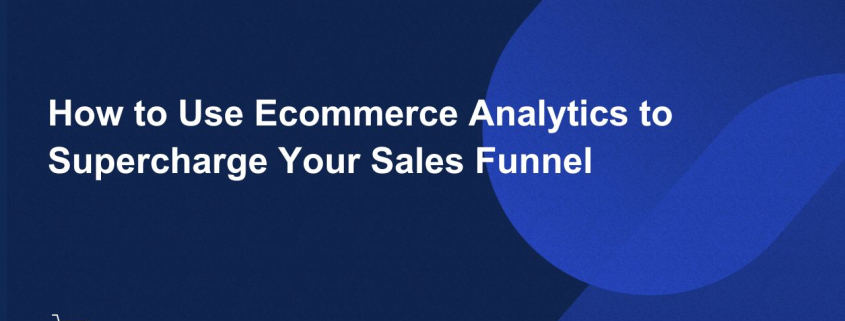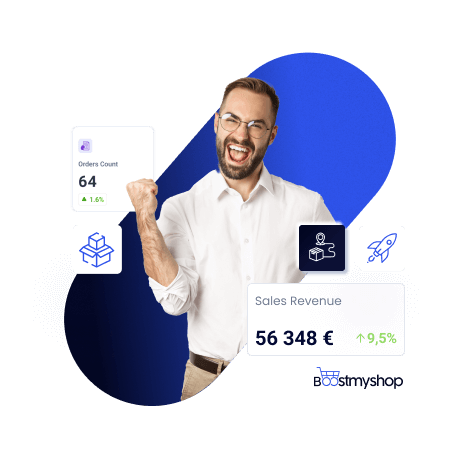How to Use Ecommerce Analytics to Supercharge Your Sales Funnel
Introduction
In the ever-evolving world of ecommerce, understanding your customers’ behavior and making data-driven decisions is crucial to stay ahead of the competition. Ecommerce analytics provides you with valuable insights into your customers’ interactions, enabling you to optimize your sales funnel for maximum conversions. In this comprehensive guide, we will explore the strategies and techniques you can use to harness the power of ecommerce analytics and supercharge your sales funnel.
Why Ecommerce Analytics Matters
To build a successful online business, you need to have a clear understanding of how your customers navigate through your website and make purchasing decisions. Ecommerce analytics allows you to track and analyze customer data, including their browsing patterns, time spent on each page, and the products they view and purchase. By utilizing this information, you can make informed decisions about your marketing strategies, website design, and product offerings to drive more sales and enhance customer satisfaction.
1. Setting Up Your Ecommerce Analytics Platform
Before diving into the world of ecommerce analytics, you need to have a robust analytics platform in place. Google Analytics is one of the most popular choices for ecommerce businesses due to its comprehensive features and user-friendly interface. Here’s how you can get started:
1. Create a Google Analytics account for your website.
2. Install the tracking code on all your web pages.
3. Set up conversion tracking to monitor key actions such as purchases and sign-ups.
4. Configure ecommerce tracking to gather data on transactions and revenue.
2. Tracking Key Metrics for Your Sales Funnel
To optimize your sales funnel, you need to identify the key metrics that align with each stage of the customer journey. Here are the critical metrics to track:
Acquisition
- Number of website visitors
- Traffic sources (organic, paid, referral, social media)
- Click-through rates (CTR) on marketing campaigns
Engagement
- Bounce rate (percentage of visitors who leave your website after viewing only one page)
- Average time spent on site
- Pages per visit
Conversion
- Conversion rate (percentage of visitors who make a purchase)
- Average order value
- Cart abandonment rate
Retention
- Customer lifetime value (CLTV)
- Repeat purchase rate
- Customer satisfaction scores
By tracking these metrics, you can gain a holistic view of your sales funnel and identify areas for improvement.
3. Analyzing Customer Behavior with Funnel Visualization
Funnel visualization is a powerful tool provided by ecommerce analytics platforms that allows you to visualize the customer journey from the initial interaction to conversion. By analyzing the steps where customers drop off, you can pinpoint the bottlenecks in your sales funnel and take corrective actions. Here’s how you can use funnel visualization effectively:
1. Identify the key steps in your sales funnel, such as the landing page, product page, and checkout page.
2. Analyze the drop-off rates at each step to determine where potential customers are leaving.
3. Optimize the pages with high drop-off rates by improving the user experience, simplifying the checkout process, or offering incentives.
4. Utilizing Segmentation for Targeted Marketing
Segmentation allows you to divide your customer base into distinct groups based on specific attributes or behaviours. By segmenting your customers, you can personalize your marketing efforts and deliver targeted messages that resonate with each group. Here’s how you can leverage segmentation to optimize your sales funnel:
a. Demographic Segmentation: Divide your customers based on demographics such as age, gender, location, and income level. This helps you tailor your marketing campaigns to appeal to different audience segments.
b. Behavioural Segmentation: Analyze your customers’ behaviours, such as past purchases, browsing history, and engagement level. This allows you to create personalized recommendations, offer relevant discounts, and send targeted emails to nurture leads.
c. Purchase Stage Segmentation: Categorize your customers based on where they are in the buying journey. This helps you deliver the right content and incentives to move them closer to making a purchase. For example, you can offer exclusive discounts to customers who have items in their cart but haven’t checked out yet.
5. A/B Testing for Continuous Improvement
A/B testing is a powerful technique that enables you to experiment with different versions of your website, marketing campaigns, and product offerings to determine what resonates best with your customers. By conducting A/B tests, you can make data-driven decisions and continuously improve your sales funnel. Here’s how to conduct an A/B test effectively:
1. Identify the element you want to test, such as the headline, call-to-action button, or product image.
2. Create two versions of the element: the control (original) and the variation (the new element you want to test).
3. Randomly split your website traffic between the control and variation.
4. Measure the performance of each version based on the desired metric (e.g., conversion rate, click-through rate).
5. Analyze the results and determine the winning version.
6. Implement the winning version and continue testing other elements to optimize your sales funnel further.
FAQs about Ecommerce Analytics and Sales Funnel Optimization
How often should I analyze my ecommerce analytics data?
It’s recommended to review your analytics data regularly, at least once a week or once a month. This allows you to identify trends, spot anomalies, and make timely adjustments to your sales funnel.
Can I use ecommerce analytics for my brick-and-mortar store?
While ecommerce analytics is primarily designed for online businesses, you can also apply similar principles to track customer behavior in your physical store. Utilize technologies like in-store tracking, customer surveys, and loyalty programs to gather data and optimize your offline sales funnel.
Are there any ecommerce analytics platforms other than Google Analytics?
Yes, apart from Google Analytics, there are several other analytics platforms available in the market, such as Adobe Analytics, Kissmetrics, and Piwik. Research and choose the one that best suits your business needs.
Conclusion: Harness the Optimal Sales Funnel through Data
In today’s competitive ecommerce landscape, leveraging ecommerce analytics is vital to understanding your customers, identifying opportunities, and optimizing your sales funnel. By setting up an analytics platform, tracking key metrics, analyzing customer behaviour, utilizing segmentation, and conducting A/B testing, you can make data-driven decisions that maximize conversions and drive revenue growth.
Remember, ecommerce analytics is not a one-time endeavour. It requires continuous monitoring, analysis, and adjustment to stay ahead of the game. So, start implementing these strategies today and unlock the full potential of ecommerce analytics to supercharge your sales funnel!



